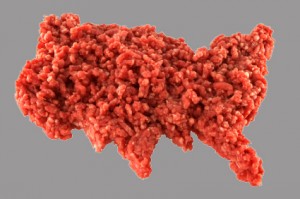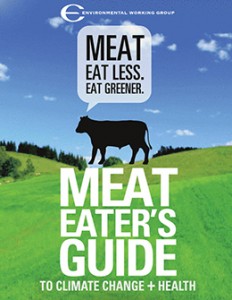Superbugs Invade Our Meats

 Recently the Environmental Working Group analyzed the latest research and government tests of supermarket meat to ferret out the truth about superbugs in meat. What they found were strands of antibiotic-resistant bacteria—so called “superbugs” that can trigger foodborne illness and infections that are hard to treat.
Recently the Environmental Working Group analyzed the latest research and government tests of supermarket meat to ferret out the truth about superbugs in meat. What they found were strands of antibiotic-resistant bacteria—so called “superbugs” that can trigger foodborne illness and infections that are hard to treat.
These little-noticed tests, the most recent in a series conducted by the National Antimicrobial Resistance Monitoring System, a joint project of the federal Food and Drug Administration, Centers for Disease Control and Prevention and U.S. Department of Agriculture, found that supermarket meat samples collected in 2011 harbored significant amounts of the superbug versions of salmonella and Campylobacter, which together cause 3.6 million cases of food poisoning a year.
Moreover, the researchers found that some 53 percent of raw chicken samples collected in 2011 were tainted with an antibiotic-resistant form of Escherichia coli, or E. coli, a microbe that normally inhabits feces. Certain strains of E. coli can cause diarrhea, urinary tract infections and pneumonia. The extent of antibiotic-resistant E. coli on chicken is alarming because bacteria readily share antibiotic-resistance genes.
Among the most worrisome recent developments:
- The federal tests published in February determined that 9 percent of raw chicken samples and 10 percent of raw ground turkey sampled from retail supermarkets in 2011 were tainted with a superbug version of salmonella bacteria. Antibiotic resistance in salmonella is growing fast: of all salmonella microbes found on raw chicken sampled in 2011, 74 percent were antibiotic-resistant, compared to less than 50 percent in 2002. These microbes, frequently found on chicken and turkey and occasionally on beef and pork, commonly cause diarrhea and in extreme cases can lead to arthritis.
- In the same federal tests, a superbug version of the Campylobacter jejuni microbe was detected on 26 percent of raw chicken pieces. Raw turkey samples contained numerically fewer of these microbes, but 100 percent of those examined were antibiotic-resistant. The Campylobacter jejuni pathogen is a common cause of diarrhea and in severe cases can trigger an autoimmune disease that results in paralysis and requires intensive care treatment.
- In 2006 FDA scientists found superbug versions of a particularly troublesome strain of E. coli, responsible for more than 6 million infections a year in the U.S., on 16 percent of ground turkey and 13 percent of chicken. Fully 84 percent of the E. coli bacteria identified in these tests were resistant to antibiotics.
- In its own tests of raw pork, published last January, Consumer Reports magazine found that 63 percent contained a superbug version of Yersinia enterocolitica, a microbe that can cause long-lasting bouts of diarrhea.
- In 2011 tests, researchers at NorthernArizonaUniversityand the Translational Genomics Research Institute found that 74 percent of store-bought raw turkey samples were tainted with Staphylococcus aureus bacteria resistant to at least one antibiotic. Of these staph bacteria, 79 percent were resistant to three or more types of antibiotics. Staph can cause skin infections in exposed cuts or produce toxins that cause foodborne illness.
 A significant contributor to the looming superbug crisis, according to scientists and health experts, is unnecessary antibiotic usage by factory farms that produce most of the 8.9 billion animals raised for food in theU.S.every year. Industrial livestock producers routinely dose their animals with pharmaceuticals, mostly administered with limited veterinary oversight and frequently without prescriptions, to encourage faster growth or prevent infection in crowded, stressful and often unsanitary living conditions.
A significant contributor to the looming superbug crisis, according to scientists and health experts, is unnecessary antibiotic usage by factory farms that produce most of the 8.9 billion animals raised for food in theU.S.every year. Industrial livestock producers routinely dose their animals with pharmaceuticals, mostly administered with limited veterinary oversight and frequently without prescriptions, to encourage faster growth or prevent infection in crowded, stressful and often unsanitary living conditions.
For Tips To Help You Avoid Superbugs in Meat, check out EWG’s Downloadable tip sheet.
Make your voice heard! Click here to find out how you can help preserve the effectiveness of antibiotics.
To read the entire report or to take action, visit the EWG website and check out the Meat Eaters Guide To Climate Change and Health